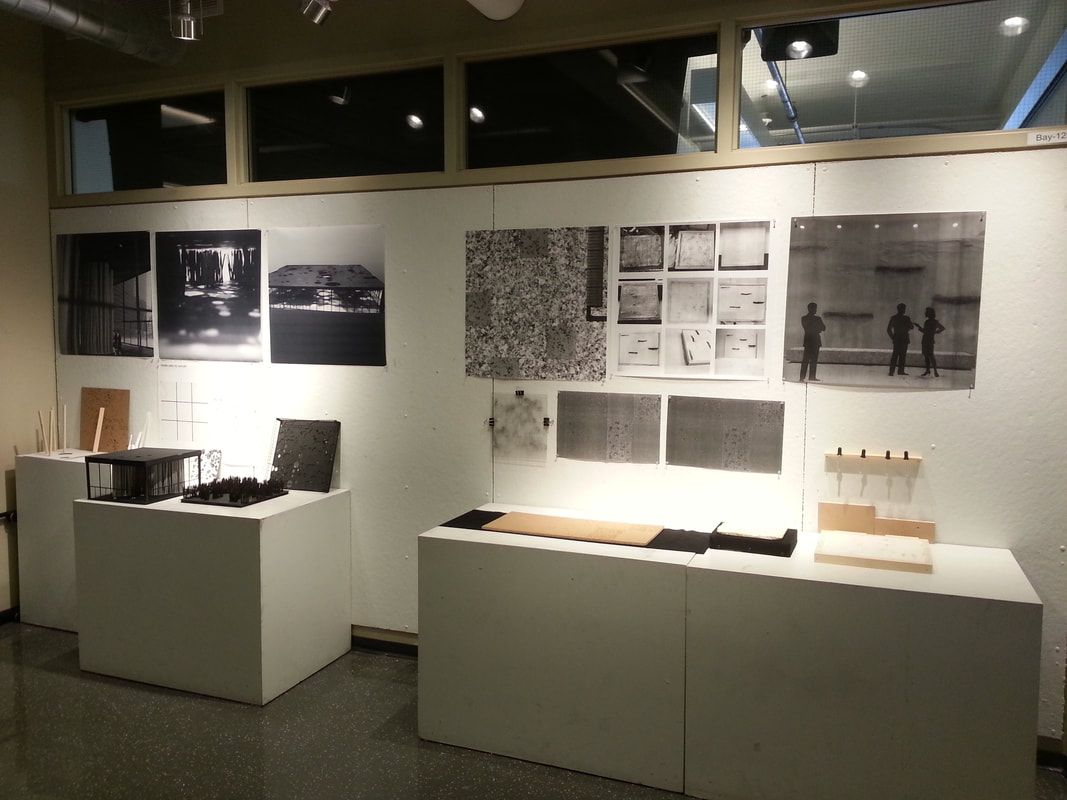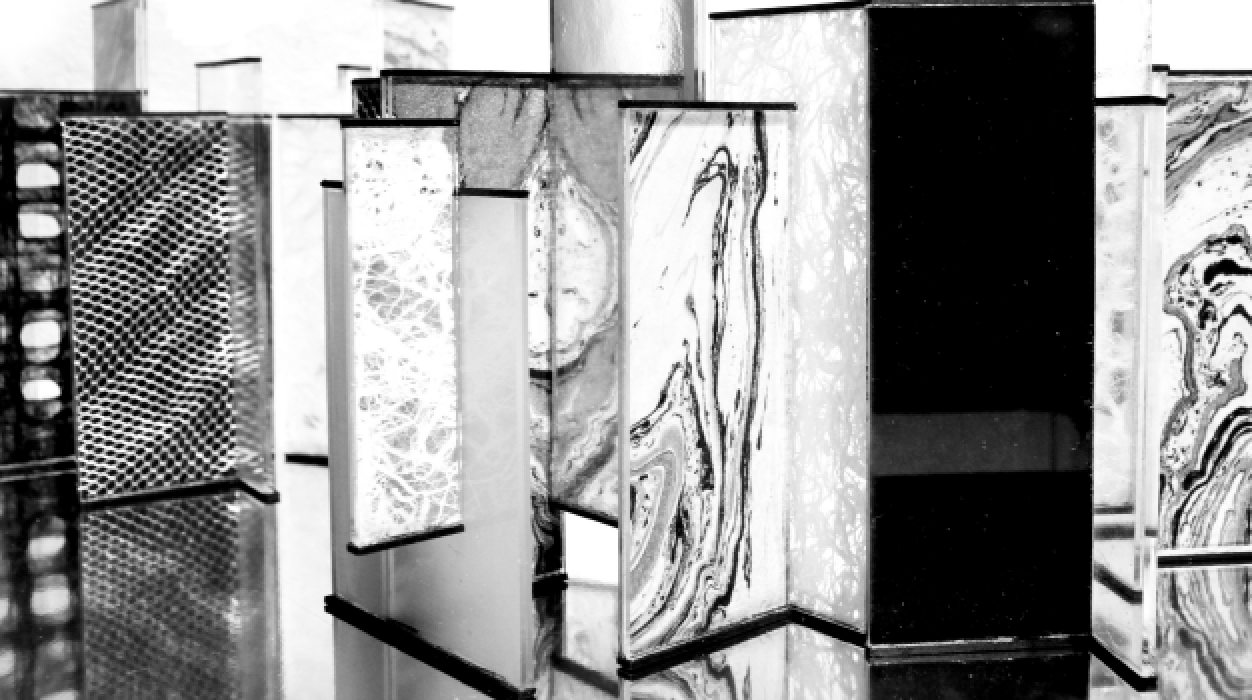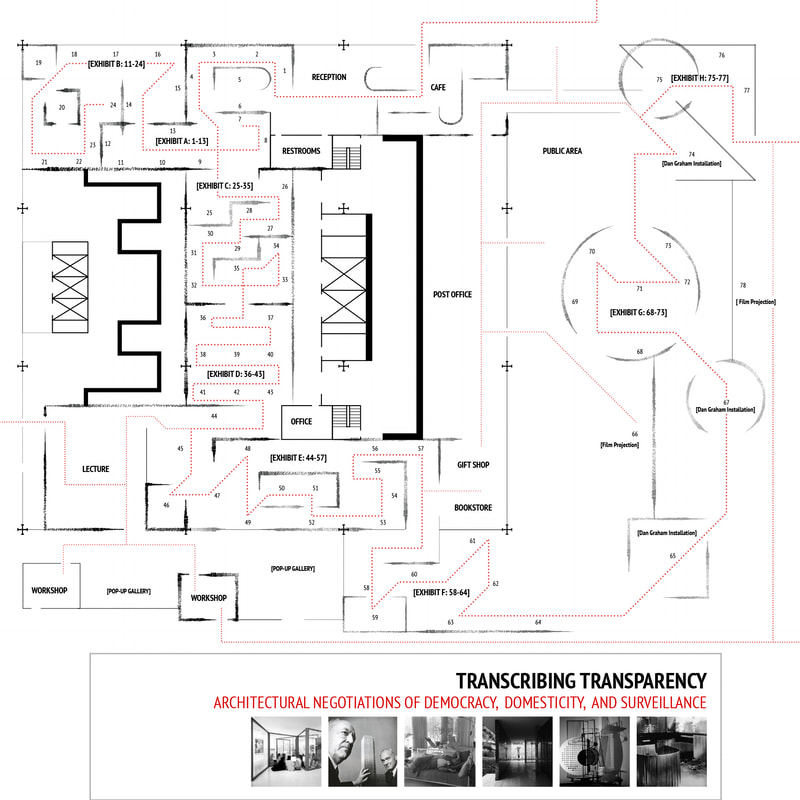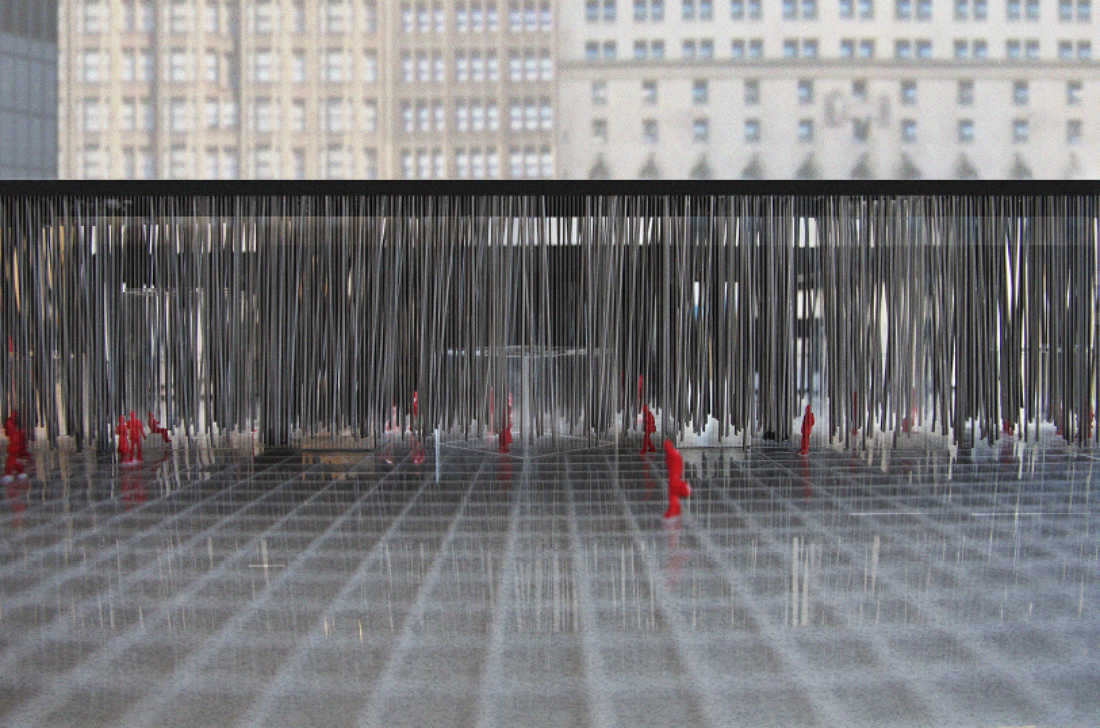Affective Skins. Year 1
Mies’ Loop Post Office provides an exemplary building for the study of skins in architecture. The building’s large steel beams painted matte black are separated from the non-load bearing exterior walls, which are full height glass and stretch along four sides of the building. The walls are only broken up only by the steel I-beam mullions. The glass façade reduces the perception of weight while accentuating the building’s transparency. Its materiality alludes to the thin, light and diaphanous qualities that one would associate with skins. The separation of the load-bearing structure and the non-load bearing enclosure has afforded enormous freedom for the exploration of architectural space in the 20th century. The building skin, on the other hand, becomes a surface opened to investigations through the various strategies of material, perception and programmatic thickenings. The opportunity for discovery is vast.
Mies’ Loop Post Office provides an exemplary building for the study of skins in architecture. The building’s large steel beams painted matte black are separated from the non-load bearing exterior walls, which are full height glass and stretch along four sides of the building. The walls are only broken up only by the steel I-beam mullions. The glass façade reduces the perception of weight while accentuating the building’s transparency. Its materiality alludes to the thin, light and diaphanous qualities that one would associate with skins. The separation of the load-bearing structure and the non-load bearing enclosure has afforded enormous freedom for the exploration of architectural space in the 20th century. The building skin, on the other hand, becomes a surface opened to investigations through the various strategies of material, perception and programmatic thickenings. The opportunity for discovery is vast.
Lauren Ebert punctured the roof of the post office to bring light into the interior, which is filled with trees and plants.
Dana Honor was interested in expressing time through the weathering of materials. She imagined the floor of the post office made of materials that can register use and weathering. leaving the traces of time in an otherwise pristine architectural space.
For Olive Ouyang, she accentuated the smoothness of the walls and inserted mirrors and glass panels that created myriad reflections within the post office.
Curatorial Strategies. Year 1
There is a long history of the architect deploying other forms of media to bring architecture to a wider audience. Mies’s involvement in the Berlin-based avant-garde publication G: Materials for Elemental Form-Creation is well known. Closer to our time, the Venice Architectural Biennale commission an architect every 2 years to conceptualize the theme of the exhibition. In this studio, you will undertake some curatorial decisions with regard to the selection of objects and drawings for the exhibition. You are also encouraged to recommend complementary activities and how they can be integrated into the overall spatial design.
There is a long history of the architect deploying other forms of media to bring architecture to a wider audience. Mies’s involvement in the Berlin-based avant-garde publication G: Materials for Elemental Form-Creation is well known. Closer to our time, the Venice Architectural Biennale commission an architect every 2 years to conceptualize the theme of the exhibition. In this studio, you will undertake some curatorial decisions with regard to the selection of objects and drawings for the exhibition. You are also encouraged to recommend complementary activities and how they can be integrated into the overall spatial design.
The Project. Year 1.
For over 200 years, the USPS has provided a vital service in mail and parcel delivery. However, it has been facing an uphill struggle financially as the popularity of emails and other forms of faster and free online communication services have eroded its core business and revenue base. The studio seeks to reimagine the USPS of the future and ensure its continued relevance by introducing new, compatible programs and activities. You have been commissioned to design a series of temporary exhibition spaces and structures for celebration of the130th anniversary of the birth of Mies van der Rohe. The ground floor of the Loop Post Office and the plaza will house the exhibition spaces and structures, which will remain for one year. The post office will continue to operate for the duration of the exhibition. As the celebration is a significant architectural event in Chicago, permission has been granted to alter the façade, the interior and the plaza of the post office as long as the principle of reversibility is taken into consideration.
The site for the project is Federal Plaza in downtown Chicago. There are 3 buildings currently occupying the site. Mies’s Loop Station Post Office, a one-story building with two basement levels of workroom space is one of the buildings. Adjacent to the post office is the John C. Kluczynski Federal Building and the Everett McKinley Dirksen United States Courthouse. The Federal building is connected below ground to the Jackson CTA station. The potential to extend the existing underground connection is an untapped opportunity. Alexander Calder’s 53-foot sculpture titled “Flamingo,” creates a strong visual counterpoint to the form and color of the buildings and plaza.
For over 200 years, the USPS has provided a vital service in mail and parcel delivery. However, it has been facing an uphill struggle financially as the popularity of emails and other forms of faster and free online communication services have eroded its core business and revenue base. The studio seeks to reimagine the USPS of the future and ensure its continued relevance by introducing new, compatible programs and activities. You have been commissioned to design a series of temporary exhibition spaces and structures for celebration of the130th anniversary of the birth of Mies van der Rohe. The ground floor of the Loop Post Office and the plaza will house the exhibition spaces and structures, which will remain for one year. The post office will continue to operate for the duration of the exhibition. As the celebration is a significant architectural event in Chicago, permission has been granted to alter the façade, the interior and the plaza of the post office as long as the principle of reversibility is taken into consideration.
The site for the project is Federal Plaza in downtown Chicago. There are 3 buildings currently occupying the site. Mies’s Loop Station Post Office, a one-story building with two basement levels of workroom space is one of the buildings. Adjacent to the post office is the John C. Kluczynski Federal Building and the Everett McKinley Dirksen United States Courthouse. The Federal building is connected below ground to the Jackson CTA station. The potential to extend the existing underground connection is an untapped opportunity. Alexander Calder’s 53-foot sculpture titled “Flamingo,” creates a strong visual counterpoint to the form and color of the buildings and plaza.
Transcribing Transparency. Olive Ouyang.
Inside Mies's Mind. Lina Alsharif.


















